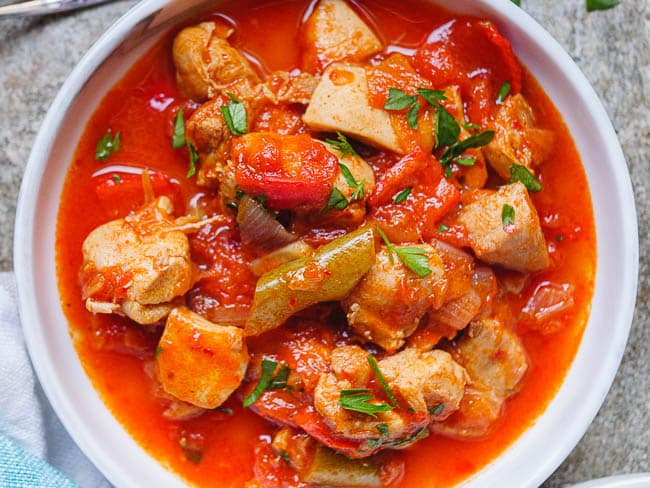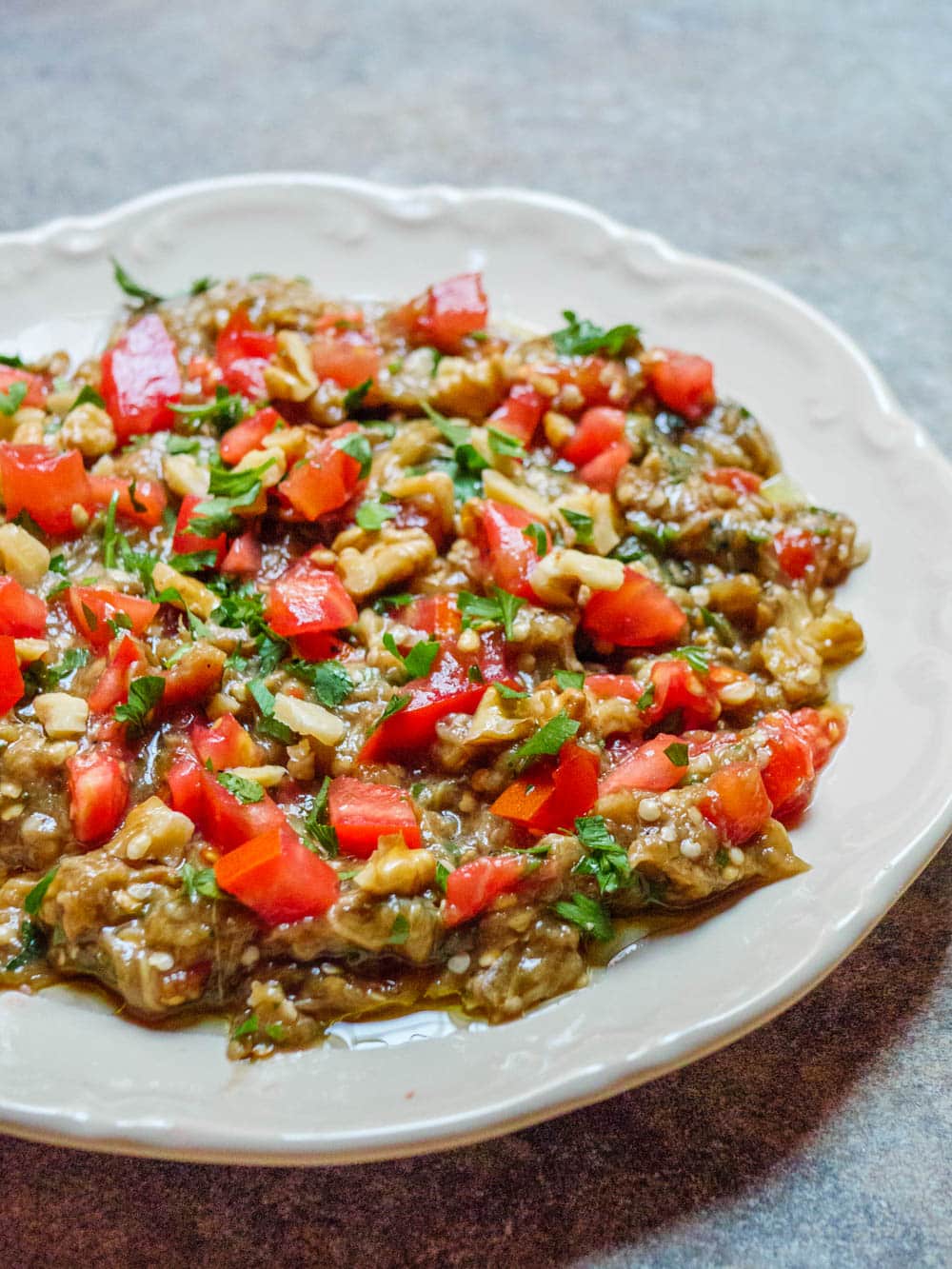This dish is so tasty and simple to make, it’s on repeat on busy weeknights at my house. Tavuk sote is a simple Turkish classic full of everything that’s good with Mediterranean foods. Here’s my go-to recipe.
The esnaf lokantası is an institution in Turkey. It translates as shopkeeper’s diner, as its original purpose was to serve wholesome, home cooked food to the neighbourhood’s shopkeepers.
In the old Istanbul neighbourhood of Balat, where I live, the small shopkeeper traditions remain. With no Starbucks, McDonalds or Chipotle in sight, we all do our local shopping at tiny, highly specialised establishments.
At lunch time, you’ll see young boys carrying huge trays of food. They’re coming from the local shopkeeper’s diners, heading for the small shopkeepers with their lunch for the day.
Obviously, these diners welcome anyone who’s up for a quick, wholesome meal. Indeed, they continue to thrive in places where very few local shopkeepers remain, serving instead a mixture of nearby workers and students.
Easy everyday Turkish chicken stew
The food served up is typically simple stews or stuffed vegetables with rice or bulgur. Soups are also popular. All warm and ready to be served at a moment’s notice.

One of the dishes you’ll often find here, is tavuk sote. Sauteed chicken with vegetables in a light tomato sauce.
It’s also a popular choice at home. And why not? It’s super simple to make, healthy and wholesome.
Not to mention absolutely delicious!
How to make tavuk sote
Tavuk sote follows a few classic principles very typical of Turkish cuisine.
It starts off with softening onion in plenty of delicious olive oil. I use a mild extra virgin for that extra delicious flavour, but just regular olive oil is fine here too.
Green Turkish peppers add another layer of flavour. Turks usually use either çarliston biber (charleston peppers, which are like smaller and thinner versions of romano pepper) or sivri biber (long, thin peppers resembling very long chili peppers).
If you can’t find them, you can always use regular green bell pepper, though its flavour isn’t as delicate as the Turkish varieties often found at Middle Eastern or Turkish grocers.
I like adding some red romano peppers as well, both to add a little extra “meat” to the vegetable part of the stew and for flavour.

And then, for those two quintessential Turkish simple, everyday stew ingredients: Tomato paste. And red pepper paste.
They add umami and a depth of flavour which really helps elevate this otherwise simple chicken dish. A little pul biber, or Aleppo pepper, adds a little heat, but even more flavour.
Trust me, whatever you put in the stew from this point onwards, whether chicken or something else, it’s going to be absolutely delicious!
How to serve Turkish chicken stew
This simple recipe for Turkish chicken stew works best with the humblest of accompaniments. A generous portion of Turkish style rice goes a long way. Bulgur pilaf is another option.

I always try to serve a simple but fresh side salad with my dinners. In summer, Turkish shepherd salad is a great option. But anything simple and fresh with whatever vegetables in season you’ve got works.
The recipe serves 3-4, depending on how hungry every is. It can easily be prepared ahead of time and reheated, and leftovers keep well in the fridge for a few days.

Tavuk sote (Easy Turkish chicken stew)
Ingredients
- 3 Tbsp olive oil
- 600 g chicken filet, thigh or breast, cut into 2 cm cubes
- 1 medium onion, rouhly chopped
- 2 Turkish green peppers, (çarliston biber) or ½ green bell pepper, cored and cut into 1 cm cubes
- 2 red romano peppers, deseeded and cut into 3 cm cubes, or more green peppers
- 50 g tomato paste
- 25 g Turkish hot pepper paste (acı biber salçası), or more tomato paste
- 1 tsp pul biber (Aleppo pepper)
- 1 tsp sugar
- 250 g tomato, peeled and roughly chopped (c. 2 medium tomatoes)
- 200 ml water
- 15 g flat-leaf parsley, finely chopped, plus extra to garnish
- salt and pepper
How I make it
- Heat a wide, thick bottomed pot over medium/high heat. Add the olive oil and brown the chicken in as many rounds as needed, making sure not to overcrowd the pan. The point is to brown the chicken, not cook it through. Set aside.
- Turn the heat down to medium/low. Fry the onion and peppers in the same pot until softened, but not coloured, 8-10 minutes, stirring regularly and adding more oil if needed. If anything from the frying of the chicken gets stuck to the bottom of the pan and looks like it might burn, add a splash of water too to dissolve this.
- Add the tomato paste, hot pepper paste (if using), pul biber and sugar. Fry for another minuter or two, stirring constantly.
- Add the chopped tomatoes, chicken (with any juices) and water. Mix well and bring to the boil, then leave to simmer until the chicken has cooked through, 10-15 minutes.
- Take off the heat and mix in the flat-leaf parsley. Leave for another 5 minutes before serving, scattering a little more freshly chopped flat-leaf parsley on top, if you like.















11 responses
This is now a family favourite. Simple but full of flavour and reminds us of Turkish holidays ❤
So tasty
I love it! Its so flavoured! Absolutely delicious, my Turkish man approved it 🥰
That’s wonderful! Thanks for sharing.
I often have this in the local locanta. They serve it with potatoes in the stew which I find is a great addition. The potatoes have obviously had enough time to take on the flavours. Any advice about when to put the potatoes in to emulate the way they do it here?
It’s a great addition! I sometimes do that too. I’d add it while the onions are halfway sauteed to ensure they have enough time to cook through, but if you cut them into small enough cubes you can add them once the chicken goes back into the pot as well.
Substituted 1 tsp paprika, 1/4 tsp cayenne & pinch salt for Aleppo pepper. Added tablespoons of chicken poaching liquid to avoid scorching while adding spices/developing flavor. Parboiled potatoes and added for final 5 min braise. Thanks for delicious recipe.
Made this recipe a month ago, loved it, making it again tonight, so tasty – sourced the Pul Biber and Aci Biber Salcasi on Amazon, the Turkish peppers from a local Mediterranean store. Also did the Turkish Rice – Amazing. Highly recommend
Hi Vidar
Some ingrdients are found in South Africa , what can I substitute for
– pul biber, or Aleppo pepper
– acı biber salçası
I love the dish and eat it regularly at a local Turkish restaurant called Saray in Cape Town – they add some type of cheese into this dish and it is served in a longish oval wooden bowl with some good bread
Instead of pul biber, you can use any fragrant chili flakes you can get your hand on, but keep in mind that pul biber is very mild (approx 1/3 the heat of cayenne pepper), so depending on the chili flakes you use, you may want to use less. Instead of aci biber salcasi you can use tomato paste and a pinch of chili flakes. Good luck!
Masha Allah